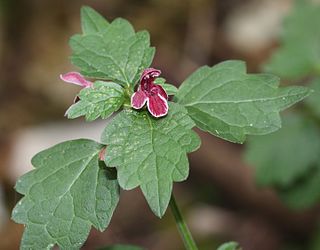
Walter Hood Fitch was a botanical illustrator, born in Glasgow, Scotland, who executed some 10,000 drawings for various publications. His work in colour lithograph, including 2700 illustrations for Curtis's Botanical Magazine, produced up to 200 plates per year.

Adrien René Franchet was a French botanist, based at the Paris Muséum national d'Histoire naturelle.
William Botting Hemsley was an English botanist and 1909 Victoria Medal of Honour recipient. The standard author abbreviation Hemsl. is used to indicate this person as the author when citing a botanical name.

Augustine Henry was a British-born Irish plantsman and sinologist. He is best known for sending over 15,000 dry specimens and seeds and 500 plant samples to Kew Gardens in the United Kingdom. By 1930, he was a recognised authority and was honoured with society membership in Belgium, Czechoslovakia, Finland, France, and Poland. In 1929 the Botanical Institute of Peking dedicated to him the second volume of Icones plantarum Sinicarum, a collection of plant drawings. In 1935, John William Besant was to write: 'The wealth of beautiful trees and flowering shrubs which adorn gardens in all temperate parts of the world today is due in a great measure to the pioneer work of the late Professor Henry'.
Fordia is a genus of flowering plants in the family Fabaceae, native from south China and Thailand to west and central Malesia. The genus was established by William Hemsley in 1886.
Excoecaria benthamiana is a species of plant in the family Euphorbiaceae. It is endemic to Seychelles.
Hemipilia camptoceras is a species of plant in the family Orchidaceae. It is endemic to the Sichuan region of China.

Keisuke Ito was a Japanese physician and biologist. He was born in Nagoya.
Littledalea is a genus of Asian plants in the grass family, native to mountains in China and neighboring countries. The genus is placed in its own tribe Littledaleae within subfamily Pooideae. The isolated tribe seems to be sister to the tribes Bromeae and Triticeae.
Thiseltonia is a genus of Australian plants in the daisy family Asteraceae. It is placed in the pussy's-toes tribe Gnaphalieae. As of June 2023, the Global Compositae Database and Florabase accepted only one species, Thiseltonia gracillima, native to Western Australia, and regarded Thiseltonia dyeri as a synonym, while Plants of the World Online accepted Thiseltonia dyeri as a separate species.

Corynocarpus is the only genus of plants in the family Corynocarpaceae and includes five species. It is native to New Guinea, Australia, New Zealand, New Caledonia, and Vanuatu.

Loxocalyx is a genus of plants in the family Lamiaceae, first described in 1891. It is native to China and Japan.

Sterculia murexHemsl. or lowveld chestnut is a southern African tree with a very limited distribution in the lowveld of eastern Mpumalanga and Eswatini. After S. alexandri it is the most southern representative of the genus in Africa. Kew currently recognises some 92 species of Sterculia, confined to the tropics and slightly beyond at low elevations.

Quercus rex is an Asian species of tree in the family Fagaceae. It has been found in the seasonal tropical forests of northern Indochina, northeastern India, and also in the province of Yunnan in southwestern China. It is placed in subgenus Cerris, section Cyclobalanopsis.

Lonicera similis is a species of flowering plant in the family Caprifoliaceae, native to Western China. This honeysuckle is known in cultivation by the variety delavayi which is reported by some authorities to be synonymous with L. similis itself. It is a large, twining, semi-evergreen shrub growing to 8 m (26 ft) tall by 1.5 m (4.9 ft) broad, with a profusion of fragrant tubular flowers opening white and ageing to yellow, in late summer and autumn. The flowers are followed by black berries. The Latin specific epithet similis means "similar to". It is similar in appearance to L. japonica, but larger and more robust. The name delavayi honours the French missionary and botanist Père Jean Marie Delavay (1834-1895).

Lonicera tragophylla, the Chinese honeysuckle, is a species of flowering plant in the family Caprifoliaceae, native to Central China, where it inhabits forest, scrub and rocky crevices. Growing to 6 m (20 ft) tall by 1.5 m (4.9 ft) wide, it is a deciduous climbing shrub with grey-green leaves and trumpet-shaped, pure rich yellow flowers in late summer and autumn. Unlike many of its relatives in the honeysuckle genus Lonicera, it is unscented.

Lilium bakerianum is a species of lily plant described by Collett Hemsley and William Botting Hemsley.
Hemsleya is a genus of flowering plants belonging to the family Cucurbitaceae.

Sabia swinhoei, known as Swinhoe's sabia, is a species that belongs to the Sabia genus in the Sabiaceae family. It was first published as a new species in Taiwan in 1886.
Puchiumazus lanceifolius is a species of flowering plant in family Mazaceae. It is a perennial native to eastern Sichuan and western Hubei provinces of south-central China. It is the sole species in genus Puchiumazus.











